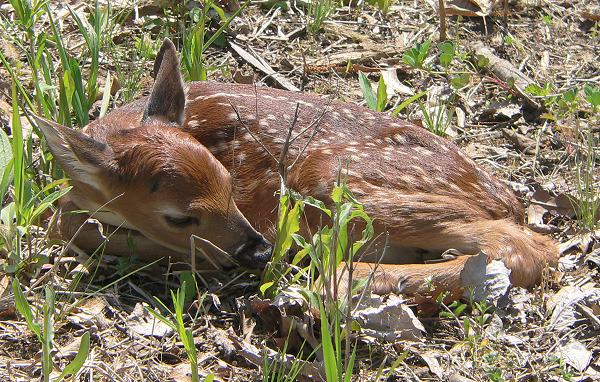The most exciting thing that happened this week was that my Polyphemus Moth cocoon – the one that I’ve been carrying back and forth to the farm and watching so carefully – finally hatched.
I had never seen a Polyphemus Moth before – Martha and Patty found the caterpillar at the farm last summer and it made its cocoon almost immediately. Mike has been teasing me about it – the cocoon was cemented inside a little clump of oak leaves and looked completely dead. But yesterday a beautiful female moth emerged.
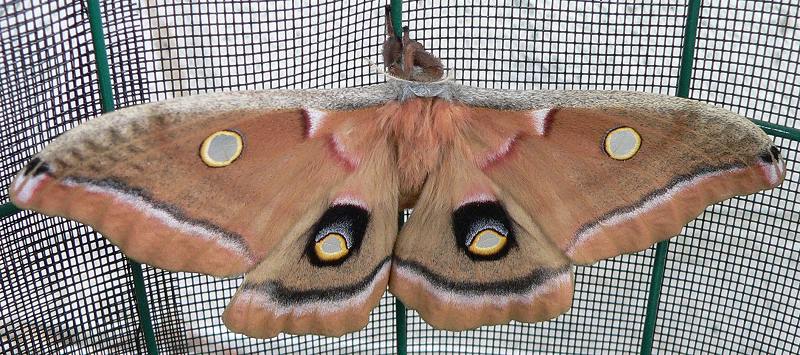
I’m hoping to mate her and get some eggs to raise over the summer. Unfortunately she hatched while we were in the city and there must not be very many Polyphemus Moths here – no males came last night at all. I’ll try again tonight, and then take her down to the farm so she can try her luck there.
The weather has gotten much warmer, so the summer butterflies are all out, and I saw several Monarchs – one at the farm and several more in St. Paul. Here are a few of the week’s butterflies at the farm.
Tiger swallowtail
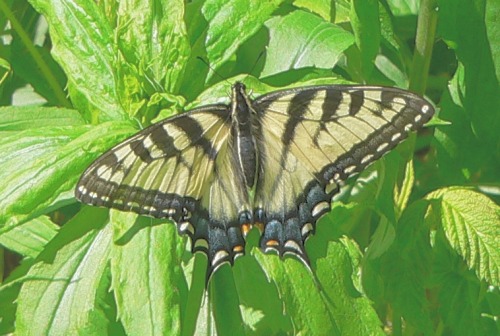
Juvenal Duskywing
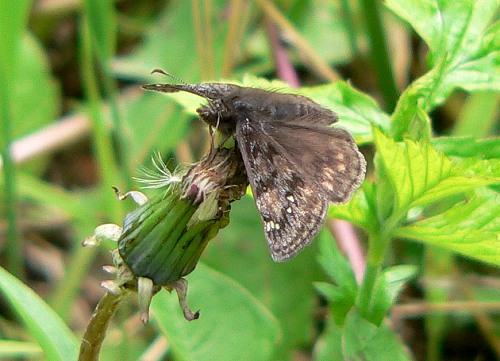
Clouded Sulphur
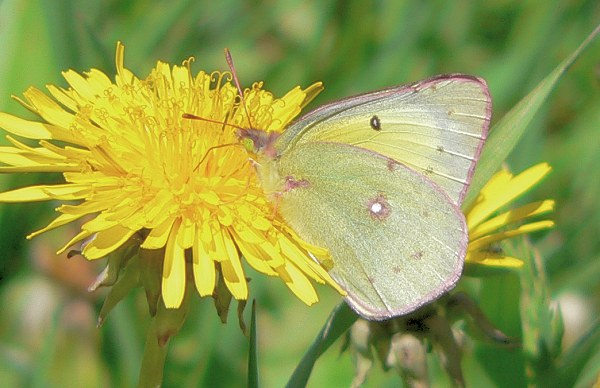
Gorgone Checkerspot
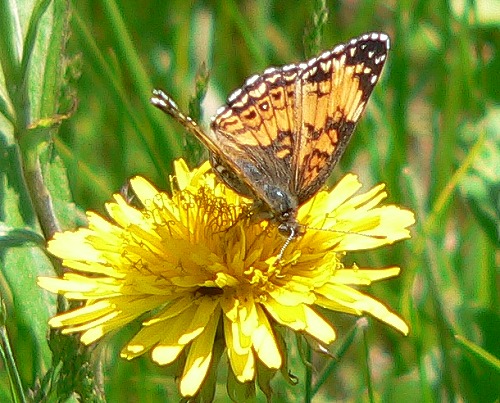
I also saw one Eastern Tailed Blue and several Black Swallowtails but didn’t get any good photos.
Indian Paintbrush (Castilleja coccinea) is blooming in several of the prairies now – it looks so brilliant against the new green leaves. It’s the first native that’s bloomed in Buffalo Ridge Prairie – our two year old prairie. Since we mow every few weeks during the first year of a prairie, the second year is when we finally begin to see how it’s going to turn out. Here’s how Buffalo Ridge Prairie looks now – with the Indian Paintbrush.

And here’s Indian Paintbrush in the Narrows Prairie.
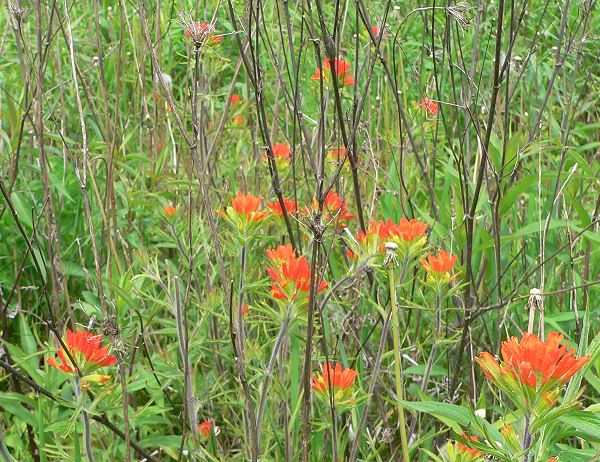
Our neighbor, Rob, came over and I took him on a gator tour of our prairies. It’s always fun for me to see all the prairies in one trip – usually it takes me at least several days to see all of them. As we were driving along Rob noticed a buck looking out at us from the woods. He has velvety new antlers growing.

Prairie plants are starting to grow back in the areas that we’ve been clearing. On Hidden Oaks Point I found big bunches of Blue-eyed Grass (Sisyrinchium campestre)
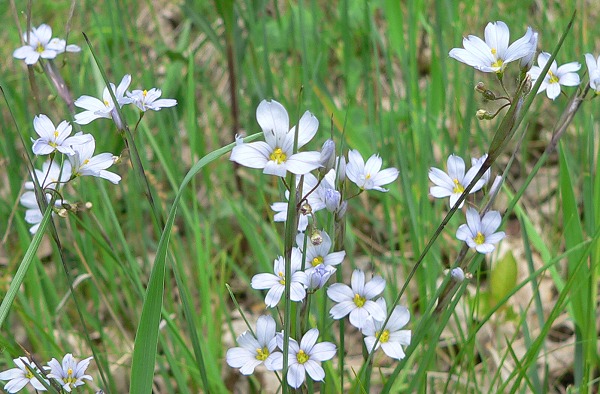
A slope covered with Robin’s Plantain (Erigeron pulchellus)
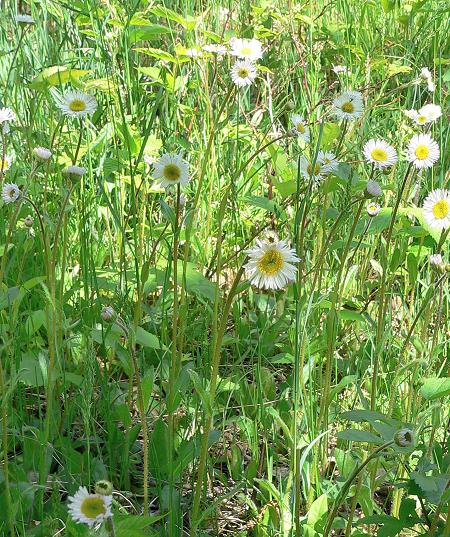
And Violet Wood Sorrel (Oxalis violacea).

In a couple places I found white Blue-eyed Grass (Sisyrinchium campestre).

There’s lots of Hoary Puccoon (Lithospermum canescens) in Hidden Oaks Prairie, under the Sumac.
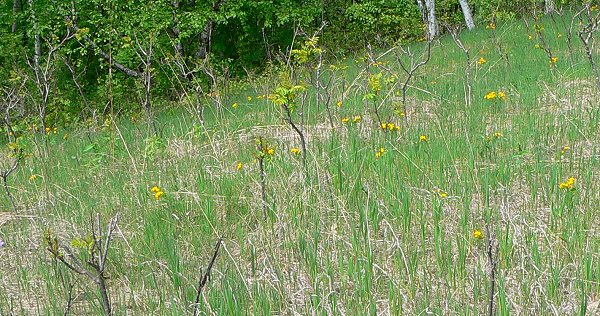
And Balsam Ragwort (Senecio paupercula) at the edges of most of the remnants.
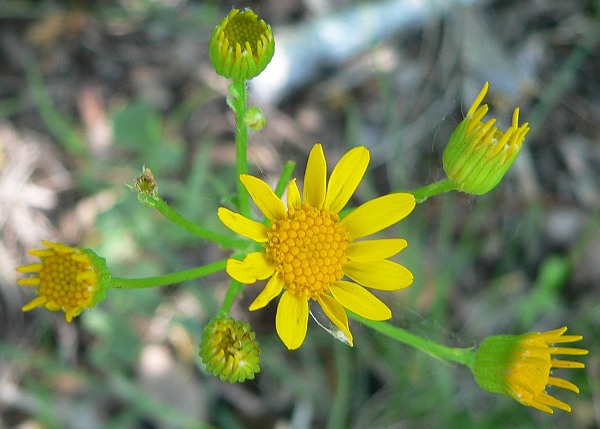
The Snapping Turtle is back in our neighbor’s pond. I think it must have just come out of hibernation – it still had mud and grass clumps covering its shell. I sat by the edge of the pond for a while hoping it would relax and come closer, but it was very suspicious. It just poked its nose up above the water and glared at me.
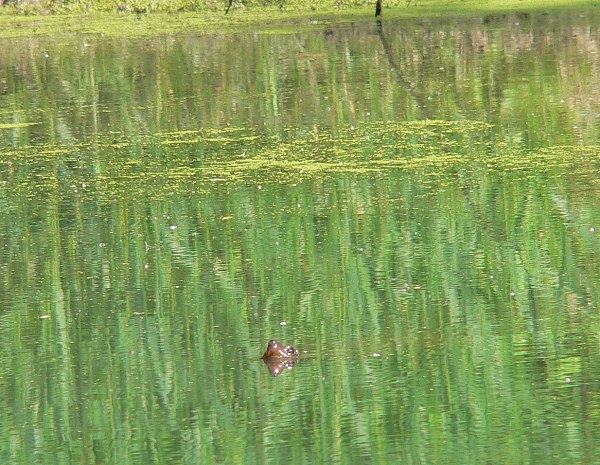
Our pond, the one we lined with plastic last summer, has never filled up with water, but it still has plenty of tadpoles. I think they may be American Toad tadpoles – I heard toads calling there a few weeks ago.

I girdled Aspen around the edge of the Knife Edge Prairie. This is at the north end of the prairie.
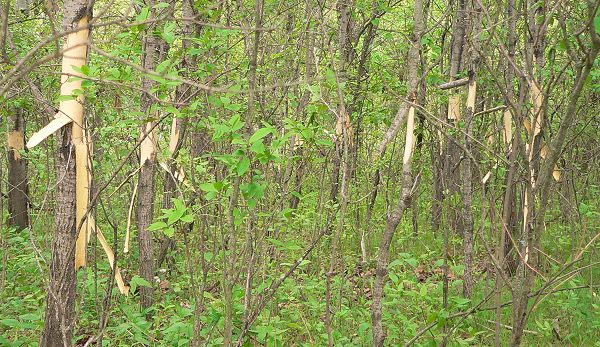
Here’s the grove of Aspen I worked on and the path that leads into the prairie. When the trees die this end of the prairie should open up a lot.
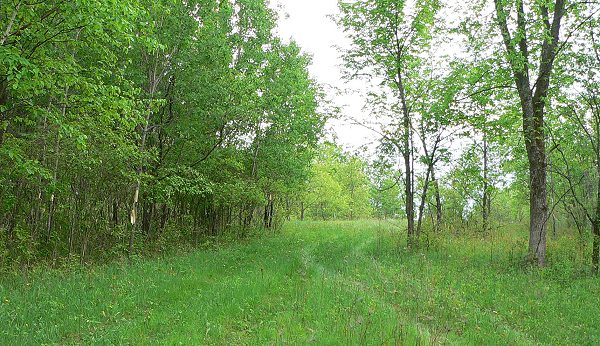
I checked almost all our bluebird houses this week. I was worried that the cold rainy spell had been hard on them but there were growing babies in all but one of the boxes. I’ve only found one box that’s being used by tree swallows. Here’s their nest.
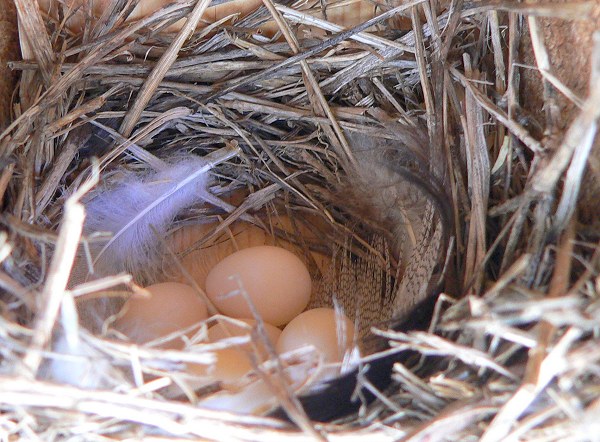
The phoebes have hatched in the nest next to the front door. The parents didn’t seem to mind us going in and out until this week. Now they get very agitated whenever we come near – hopefully the babies will fledge soon so they won’t have to worry so much.
The orioles happily gobble up grape jelly from bowls I put out on the bird-feeder deck.
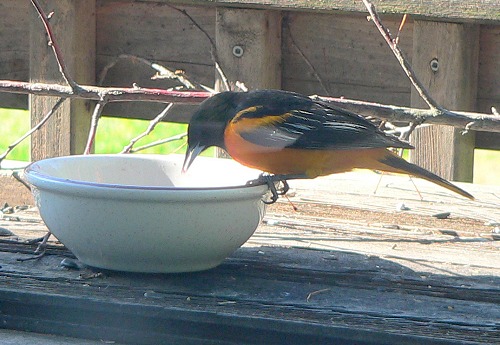
I found one fawn curled up on Buffalo Ridge Prairie. We have to be very careful at this time of year, whenever we drive the gator or do mowing, not to run over any fawns. They stay very quiet and very well hidden.
